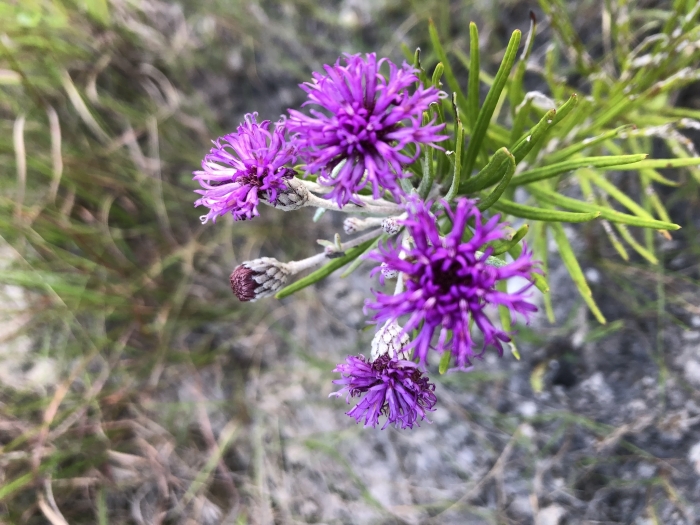Woolly Ironweed
(Vernonia lindheimeri)
Woolly Ironweed (Vernonia lindheimeri)
/
/

Brooke Smith
CC BY 4.0
Image By:
Brooke Smith
Recorded By:
Copyright:
CC BY 4.0
Copyright Notice:
Photo by: Brooke Smith | License Type: CC BY 4.0 | License URL: http://creativecommons.org/licenses/by/4.0/ | Rights Holder: Brooke Smith | Publisher: iNaturalist | Date Created: 2021-07-17T00:38:02Z |




















































Estimated Native Range
Summary
Vernonia lindheimeri, commonly known as Woolly Ironweed, is a deciduous perennial herb native to the prairies and open woodlands of Texas and northeastern Mexico. It typically grows to a height of 1 foot (0.3 meters) and spreads 1-3 feet (0.3-0.9 meters). The plant forms a clump of narrow, lance-shaped leaves that are covered in a dense woolly down, giving it a distinctive silvery appearance. From mid-summer to fall, Woolly Ironweed produces clusters of small, fluffy, pink to purple flowers that are highly attractive to butterflies and other pollinators.
Woolly Ironweed is valued for its drought tolerance and its ability to thrive in poor, rocky soils, making it an excellent choice for xeriscaping and naturalistic plantings. It is also used in wildflower gardens, borders, and as a ground cover. This plant is particularly noted for its long blooming period and its contribution to the ecosystem as a nectar source for pollinators. In cultivation, it requires full sun and can tolerate a range of soil types, provided they have good drainage. While generally low-maintenance, it can be susceptible to rust and stem rot in overly moist conditions.CC BY-SA 4.0
Woolly Ironweed is valued for its drought tolerance and its ability to thrive in poor, rocky soils, making it an excellent choice for xeriscaping and naturalistic plantings. It is also used in wildflower gardens, borders, and as a ground cover. This plant is particularly noted for its long blooming period and its contribution to the ecosystem as a nectar source for pollinators. In cultivation, it requires full sun and can tolerate a range of soil types, provided they have good drainage. While generally low-maintenance, it can be susceptible to rust and stem rot in overly moist conditions.CC BY-SA 4.0
Plant Description
- Plant Type: Herb
- Height: 3-4 feet
- Width: 1-3 feet
- Growth Rate: Moderate
- Flower Color: Pink, Purple
- Flowering Season: Summer, Fall
- Leaf Retention: Evergreen
Growth Requirements
- Sun: Full Sun
- Water: Medium, High
- Drainage: Medium, Fast
Common Uses
Bee Garden, Bird Garden, Butterfly Garden, Deer Resistant, Drought Tolerant, Hummingbird Garden, Low Maintenance, Showy Flowers
Natural Habitat
Prairies and open woodlands in Texas and northeastern Mexico
Other Names
Common Names:
Scientific Names: , Vernonia lindheimeri, Cacalia lindheimeri,
GBIF Accepted Name: Vernonia lindheimeri Gray & Engelm.